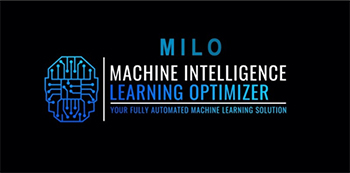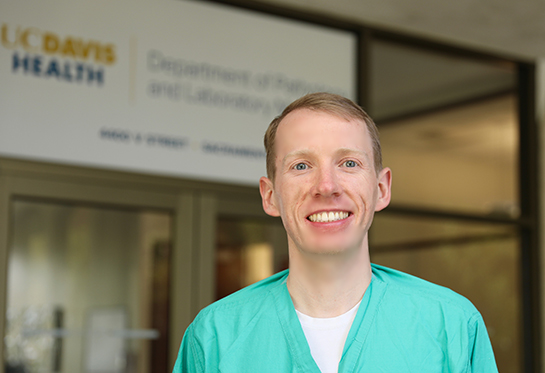Meet MILO, a powerful machine learning AI tool from UC Davis Health
Developers say MILO is a virtual bundle of experts at your fingertips
In 2014, Nam Tran, professor of pathology and laboratory medicine, lost his mother-in-law due to complications from a hospital-acquired infection. He wished there was a better way for physicians to predict and diagnose infections faster, leading to timely intervention.

Tran, senior director of clinical pathology laboratory at UC Davis Health, came to Hooman Rashidi*, vice chair of informatics and computational pathology and an expert in machine learning (ML) and artificial intelligence (AI), with a small data set of burn patients with acute kidney injury (AKI). Initially skeptical of AI/ML, he challenged Rashidi to develop a predictive model that could predict AKI, a common complication of infection, from a set of biomarkers.
Rashidi decided to give it a try. Unknown to Rashidi and Tran, their work on AKI set the stage for the development of a very powerful data analytic software named MILO.
What is MILO?
Machine Intelligence Learning Optimizer (MILO) is a turnkey software tool that provides a fully automated ML/AI solution to many different research and business needs. From the time of its early development, it has been validated as a robust platform by multiple research studies and has recently been licensed for business applications.
“MILO is a real timesaver and a game changer,” said Rashidi, professor in the department of pathology and laboratory medicine. “It gives the best accuracy at the fastest rate.”
MILO provides realistic and reliable results that are better than traditional non-automated analysis approaches. MILO does multiple tasks such as data cleaning and scaling and finding the best performing ML model. Using machine learning, it builds and compares hundreds of thousands of models within various optimized ML pipelines. The users pick and deploy the most suitable model based on their needs and the field’s best practices. This process is as easy as making a few clicks.
MILO’s approach is simple: Make no assumptions
“The beauty of MILO is that it minimizes human bias in deciding on the best algorithm or feature selector for the dataset,” Rashidi said.
Without any assumptions, MILO works as a matchmaker between the data set and the various algorithms. It ultimately identifies the best combination of algorithm, feature selector and other variables. Its built-in system performs like a virtual ML and software engineering team at the service of the user.
“MILO is like a team of experts at your fingertips!” said Rashidi. “It enables any investigator to take full advantage of the powerful world of machine learning in a very user-friendly interface. It is super simple and virtually anybody can use it.”
Machine learning predicts AKI in patients with burns and with trauma
Tran and Rashidi were fortunate to have data on neutrophil gelatinase-associated lipocalin (NGAL), a powerful biomarker for AKI. They found that “if NGAL is a great biomarker, machine learning is even better,” said Tran.
The study predicting AKI in burn patients using AI and ML was a precursor to more studies on AKI in trauma patients and to the development of MILO. What took the team four months to find in the AKI study using traditional non-automated approach, MILO did in less than a day and with better performance measures.
“The initial AKI pilot project in burn patients was verified with secondary prospective data. We were also able to include tertiary data from the University of Cincinnati and UC Davis and now we know it is as real as it gets. The model is predictive of AKI across the board, in both burns and non-burns trauma patients. Very exciting!” Rashidi said.
Using MILO, the researchers were also able to develop models that work well in point of care (POC) delivery. The ML algorithm can save physicians critical time to act based on more accurate and precise knowledge. With a handheld device, physicians or paramedics can have more precision in predicting whether trauma patients will develop AKI or other disorders that may need immediate attention.
“Who wouldn’t want to know earlier and with confidence the result that is accurate, sensitive and specific?” Tran said.
Bright minds, many long nights and numerous collaborations behind MILO
MILO is a product that came out of UC Davis with the efforts of three passionate researchers. The core MILO team includes Hooman Rashidi, Nam Tran and Samer Albahra, the current clinical informatics fellow and computer software engineer.
“The work that we’ve done wouldn’t have been successful if we didn’t have the right team,” Rashidi said.
A solid group of people from laboratory specialists, machine learning experts, burn and trauma surgeons, internists, basic science researchers and business developers made MILO a successful innovation.
“One of the biggest tributes on this project is for Tina Palmieri, professor and director of the Firefighters Burn Institute Regional Burn Center at UC Davis Medical Center,” Rashidi said. “She is a great collaborator and deserves much credit as the clinical rock of the Burn Center.”
MILO’s intellectual property, business development and partnerships
James Kovach serves as a key advisor for the MILO team. He is the chief innovation officer at Aggie Square and the director of Translational Entrepreneurship and Industry Research Alliances at UC Davis Health. With his keen eye for innovation and business potential, Kovach saw the great value of MILO. He worked with InnovationAccess, a unit of Innovation and Technology Commercialization (ITC) in the UC Davis Office of Research, to file provisional patent applications for MILO and for the AKI analysis. In January, MILO was showcased at the BIG Event of the J.P. Morgan Healthcare Conference. This event was sponsored by the ITC’s Venture Catalyst unit.
Recently, MILO was licensed to mdlogix, a leading behavioral health software company who owns BHWorks software platform. MILO’s predictive analytics capabilities complement the various software solutions that mdlogix offers.
The MILO team also worked with a multicenter dataset for predicting severe infections in burn patients. With the recent COVID-19 pandemic, the MILO team started a multi-institutional collaboration to study eicosanoids and cytokines in patients with SARS-CoV-2 infection. They are also part of a collaboration between UC Davis and the Pakistani National Institute of Health - a WHO Collaborating Centre for Research and Training in Viral Diagnostics - for a COVID-19 investigational study. The software will be used as a predictive analytics tool to help in matters such as distinguishing potential intensive care unit (ICU) patients from non-ICU patients.
"The possibilities of applying MILO’s predictive analyses to improve patient care and to potentially save lives is remarkable,” said Allison Brashear, dean of the UC Davis School of Medicine. "The exemplary work by the MILO team is indicative of the interdisciplinary innovation taking place throughout the UC Davis School of Medicine."
* Professor in the department of pathology and laboratory medicine, vice-chair of Graduate Medical Education, vice-chair of Informatics and Computational Pathology, director of Residency Program, and director of Flow Cytometry and Immunology.
Learn more:
Recognizing kidney injury due to burns is improved by artificial intelligence
Boldly Learning: Dr. Hooman Rashidi (video)
Read the full studies on MILO:
Early Recognition of Burn- and Trauma-Related Acute Kidney Injury: A Pilot Comparison of Machine Learning Techniques (Nature Scientific Reports, Jan 2020)
Novel application of an automated-machine learning development tool for predicting burn sepsis: proof of concept (Nature Scientific Reports- July 2020)



